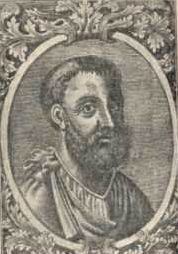Name Qusta Luqa | ||
 | ||
Books Qusta Ibn Luqa on Numbness: A Book on Numbness, Its Kinds, Causes and Treatment According to the Opinion of Galen and Hippocrates | ||
Qusta ibn Luqa
Qusta ibn Luqa (820–912) (Costa ben Luca, Constabulus) was a Syrian Melkite physician, scientist and translator. He was born in Baalbek. Travelling to parts of the Byzantine Empire, he brought back Greek texts and translated them into Arabic.
Contents
- Qusta ibn Luqa
- Personal life
- Translations
- Original works
- Testimonials
- Involvement with peers
- Writings
- Influence
- References
Personal life
Qusta ibn Luqa al-Ba'albakki, i. e. from Baalbek or Heliopolis, Lebanon, a Melkite Christian, was born in 820 and flourished in Baghdad. He was a philosopher, physician, mathematician and astronomer. He died in Armenia in A.D. 912.
Translations
Translations of Diophantos, Theodosius of Bithynia's Sphaerica, On Days and Nights (Περὶ ἡμερῶν καὶ νυκτῶν -De diebus et noctibus), On the places of habitation (Περὶ οἰκήσεων - De habitationibus), Autolycus' On the moving sphere (Περὶ κινουμένης σφαίρας - De sphaera quae movetur), On Risings and Settings (Περὶ ἐπιτολῶν καὶ δύσεων - De ortibus et occasibus), Hypsicles' On Ascensions (Ἀναφορικός), Aristarchus, Theophrastus’ Meteora, Galen’s catalogue of his books, Hero of Alexandria's (Heron's) Mechanics, and John Philoponus were made or revised by him, or made under his direction. He wrote commentaries on Euclid and a treatise on the Armillary sphere. He was a prominent figure in the Graeco-Arabic translation movement that reached its peak in the 9th century. At the request of wealthy and influential commissioners, Qusta translated Greek works on astronomy, mathematics, mechanics and natural science into Arabic. He also produced works of his own: more than sixty treatises are attributed to him. He wrote mainly on medical subjects, but also on mathematics and astronomy. Only a small part of his production has so far been edited. The extant editions of Qusta’s medical works show that he was thoroughly acquainted with Hippocratic-Galenic humoral medicine– the theoretical system that constituted the basis of formal medicine in Islam.
Original works
His original works, many listed in the Fihrist of Ibn al-Nadim, dealt with contemporary science, medicine, astronomy and philosophy. A Latin translation of his work ‘On the Difference between the Spirit and the Soul’ (De Differentia Spiritus et Animae) was one of the few works not attributed to Aristotle that was included in a list of ‘books to be 'read,' or lectured on, by the Masters of the Faculty of Arts, at Paris in 1254, as part of their study of Natural Philosophy. This translation was made by Joannes Hispalensis, (John of Seville, fl. 1140). He wrote a treatise on Nabidh. His Medical Regime for the Pilgrims to Mecca: The Risālā Fī Tadbīr Safar Al-ḥa is available in translation.
Testimonials
Of him Ibn al-Nadim says: "He is an excellent translator; he knew well Greek, Syriac, and Arabic; he translated texts and corrected many translations. Many are his medical writings." Qusta was with Hunayn Ibn Ishaq the author who best served Greek culture in the Arab civilization.
Involvement with peers
He was also involved, with his fellow-Christian Hunayn ibn Ishaq, in an epistolary exchange with the Muslim astronomer, Abu Isa Yahya ibn al-Munajjim, who had invited them to embrace Islam. Both refused, and provided their reasons for rejecting al-Munajjim's Islamic faith.
Writings
Influence
He was named (as Kusta Ben Luka) by the poet William Butler Yeats as a source for the ideas in the poet's philosophical treatise, A Vision.
